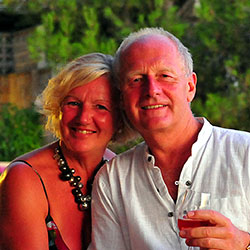With Hanoi still set to be on the Formula 1 Grand Prix racing circuit at some time yet to be determined; Vietnam will be in the spotlight worldwide but here we’ll take you on a different street circuit.
At odds with the razzmatazz of F1, the historically communist capital of North Vietnam has a distinctive and pragmatic character, compared with the more decadent and ‘Western’ south.

Our guide who meets us at the airport tells us how hard working and diligent are the northern Vietnamese, compared with the south, before we’ve even settled ourselves into our car.
Although we initially dismiss this as a regional north/south bias, as in England, during our time here we do identify a more utilitarian nature to the north, in contrast with the more freewheeling and prosperous south.

There’s a distinctly opposing view between the two; the north believing it ‘saved’ the south; the south still resenting the ‘invasion’ by the north.
That said, the Presidential Suite at our hotel, The Silk Path, offers little to criticise. The hotel is on a busy city street and although lacking the grandiose atrium waste of space now associated with luxury hotels, is clean and well-presented throughout.
Our suite is a well-appointed and presented two bedroom apartment with kitchen, spacious lounge and picture windows overlooking the city. It’s a wonderful haven and welcome relief from the bustling streets outside.

 Our first foray into the city is to explore the old town.
Our first foray into the city is to explore the old town.
This divides roughly between the old market area and the residential ‘yellow block’ quarter.
The first is self-explanatory whereas the yellow block quarter is a residential district of communist style block-built austere apartments, crammed to the window bars with ever growing family numbers.

The ‘Yellow Blocks’ encapsulate a complete social cross-section of Hanoi life
As family sizes, living demands and prices have increased, so the blocks have been ‘stretched’ by adding box-shaped extensions onto former balconies.

Yellow Block or birdcage?
 This has resulted in Lego-like structures that bizarrely resemble the bird cages that we see in our next port of call, the street markets.
This has resulted in Lego-like structures that bizarrely resemble the bird cages that we see in our next port of call, the street markets.
Hanoi offers one of the most diverse market scenes, from the predictable local food produce through to bonsai trees, wood sculpture, metal tube section hardware, local sweet delicacies, tropical birds, fish and fighting cocks in cages.

Some of the market sights are nothing to crow about
We’re uncertain what we’re going to come across next as we amble along the streets and although some of the sights might trouble our sentiments, nevertheless the streetscape is vibrant and varied.
Our next visit is to the Presidential Palace and gardens, some fifteen minutes away from the Old Quarter.

Constructed in 1900 by the colonial French it was intended to be Ho Chi Minh’s official residence but the Vietnamese leader opted for a traditional Vietnamese stilt-house instead, within the peaceful grounds surrounding the palace. Here, lush fruit groves and peaceful, well-kept botanical gardens contrast with the bustling Old Quarter.
Within the gardens are the One Pillar Pagoda, Ho Chi Minh Museum and Ho Chi Minh Mausoleum
The North Vietnamese leader, Ho Chi Minh, led the Vietnamese nationalist movement for more than three decades. He first fought the Japanese, then the occupying French colonial power and subsequently the US-backed South Vietnamese. He was also President of North Vietnam from 1954 until his death and is revered as the saviour of Vietnam ‘til today.
Ho Chi Minh eschewed the riches and glamour of office, as demonstrated by his residence and the contrasts of grandeur are interesting with the palace and mausoleum which are anything but austere. The gardens and one pillar pagoda allude to a more dignified and contemplative existence and the whole complex is well worth the visit.

 We take a brief break at a street cafe for a coffee and watch the world go by, before heading to another roadside restaurant for Bun Cha, a traditional broth of pork and noodles that is served in steaming bowls; with tables, chairs and tables cleared away and reset in double-quick time to avoid busy workers spending too long at their lunch.
We take a brief break at a street cafe for a coffee and watch the world go by, before heading to another roadside restaurant for Bun Cha, a traditional broth of pork and noodles that is served in steaming bowls; with tables, chairs and tables cleared away and reset in double-quick time to avoid busy workers spending too long at their lunch.

 We now step back in time with a visit to The Temple of Literature.
We now step back in time with a visit to The Temple of Literature.
Built in 1070 and dedicated to Confucius, the temple hosts the Imperial Academy, Vietnam’s first national university.
Originally it only accepted the country’s elite and royal family as students, before eventually opening its doors to clever ‘commoners’.
Successful graduates had their names engraved on stone stele found on top of the stone turtles around one of the inner courtyards.
Several connected courtyards and gardens lead us through the complex of study, worship and dormitory areas.
The Temple of Literature is one of Hanoi’s most picturesque tourist attractions, well worth a visit and an extremely well preserved example of traditional-style Vietnamese architecture.
It’s also a haven from the noise and pollution of the city that clamours outside its walls.

If we’re in any doubt that space is at a premium in Hanoi, we stop en route back to our hotel, at Train Street, which dispels any lingering doubts.
Wall-to-wall residential blocks with small businesses and cafes are split by the regional commuter train track that leaves barely enough room for the locomotive to squeeze through.

Although this has become a tourist attraction that swells numbers, the community adjacent to the track typifies poorer urban living within the city and provides an excellent insight into daily life, as locals sweep their forecourts and hustle kids off to school.

 It’s a busy place but there’s a wealth of interest to be found if you can dodge the thousands of motorbikes and mopeds that cram the roads.
It’s a busy place but there’s a wealth of interest to be found if you can dodge the thousands of motorbikes and mopeds that cram the roads.
Getting around is easy enough as many of the sites are within walking distance. We avoided the motorbike taxis on the basis of safety and the cyclos couldn’t fit our two Western backsides into any one of them – so local metered taxis are the best bet unless you have your own pre-arranged transport.
 For many, a visit to Hanoi will be seen as simply a transit point for onward travel to the tourist sites of North Vietnam.
For many, a visit to Hanoi will be seen as simply a transit point for onward travel to the tourist sites of North Vietnam.
We suggest, however, that a brief stay and tour of the city itself will be well rewarded – as long as you find yourself somewhere peaceful and comfortable to rest your head at night.

If you’d like to combine a visit to Hanoi in North Vietnam with your own adventure to anywhere in Southeast Asia, then why not ask us to arrange your own tailor-made travel – to immerse yourself in the wonders of this world?

 Let us plan your own inspiring journey to exotic climes
Let us plan your own inspiring journey to exotic climes
Why not download the TLC World guide brochure or give us a call today on 01202 030443, or simply click ‘enquire’ to submit your own personal itinerary request




































